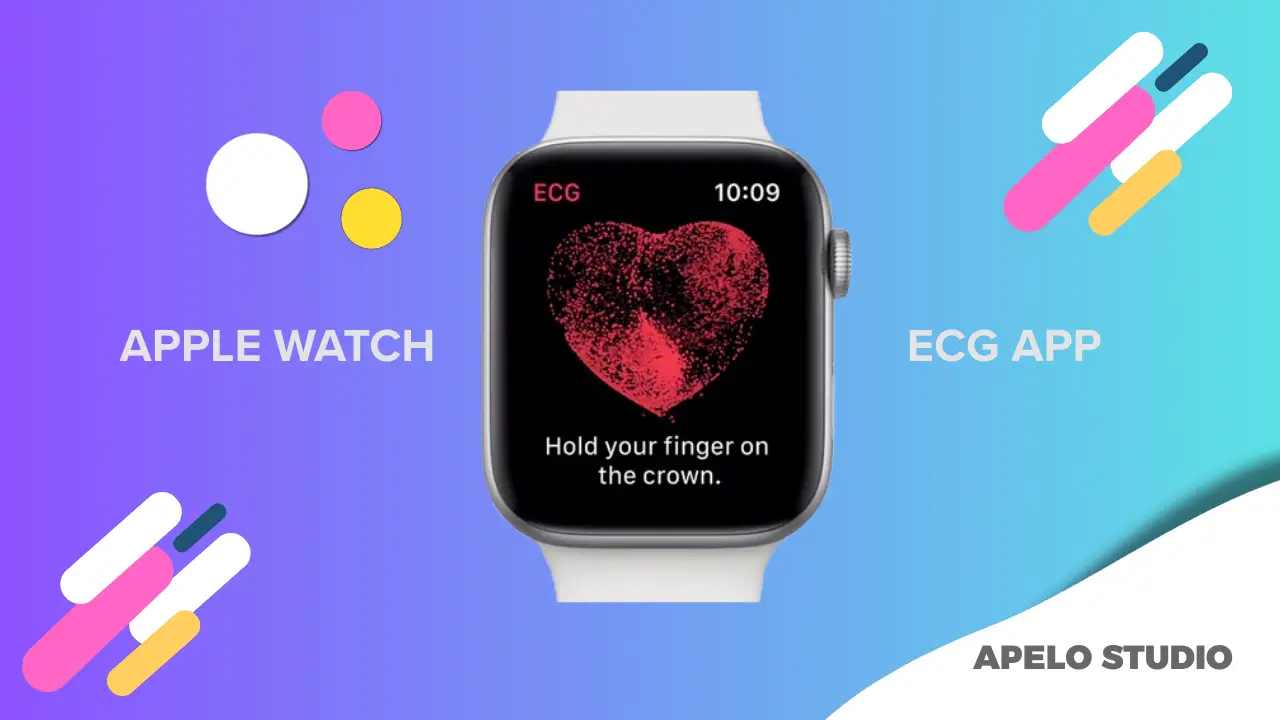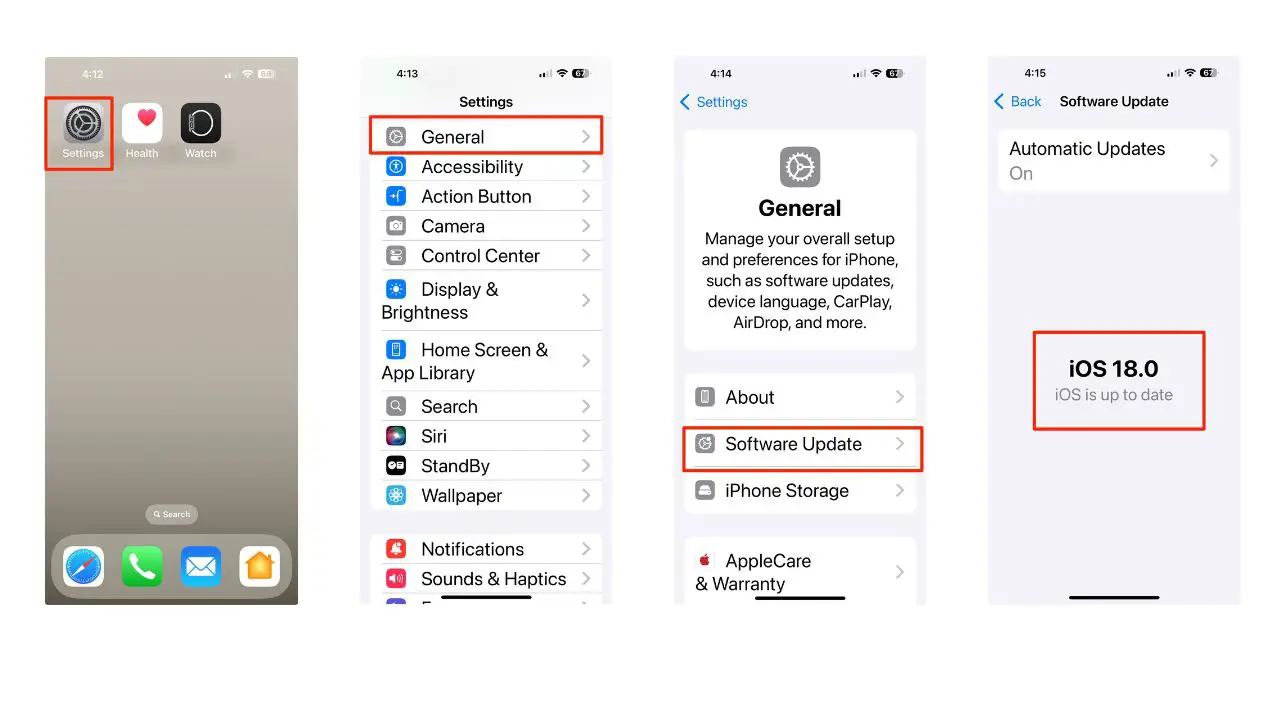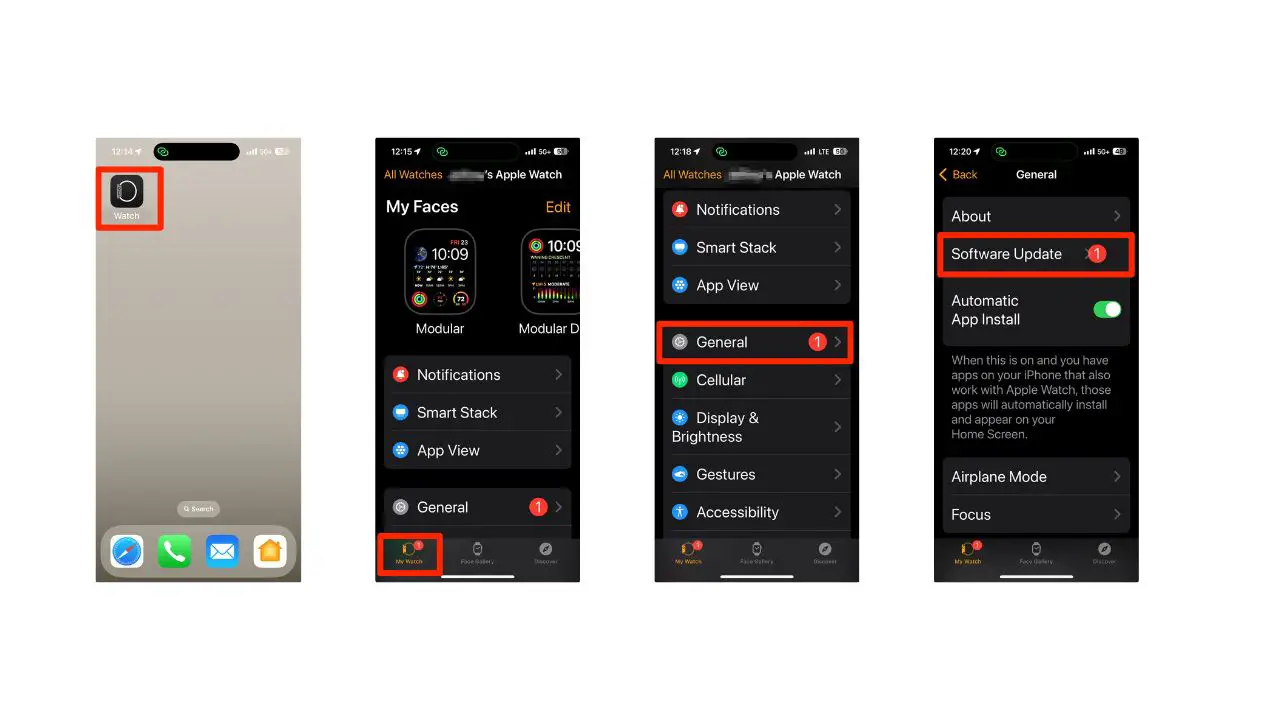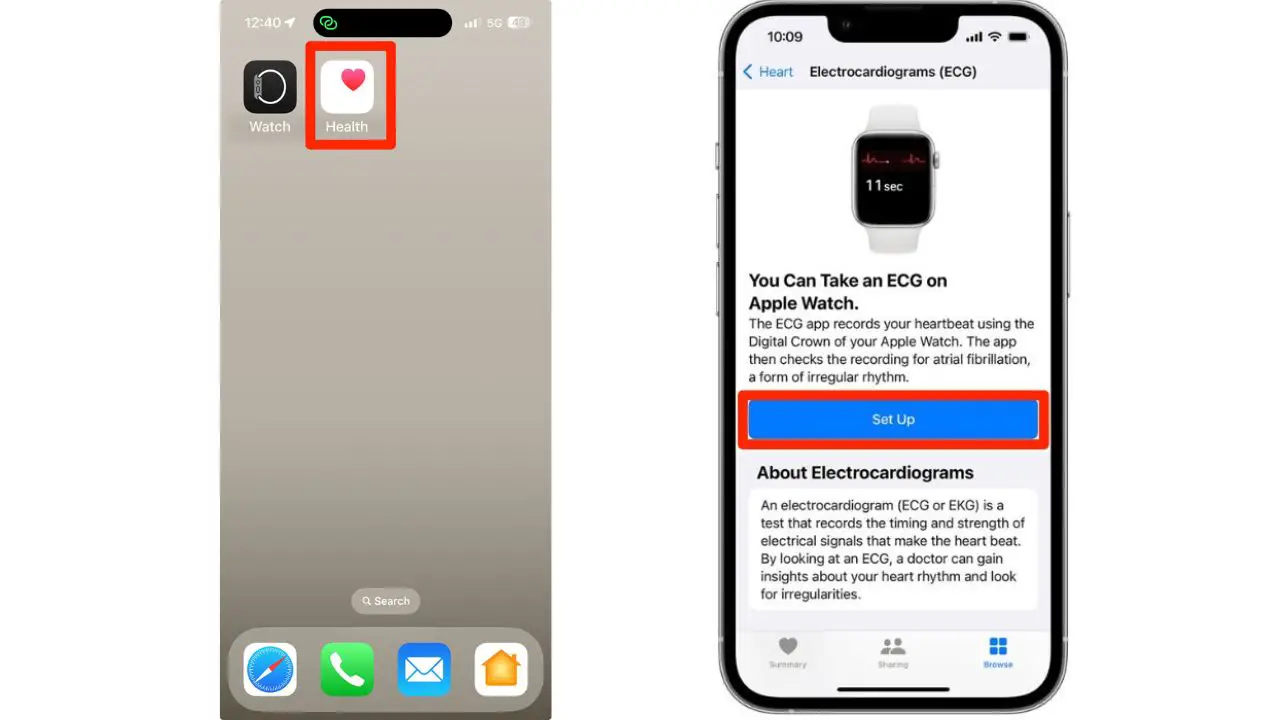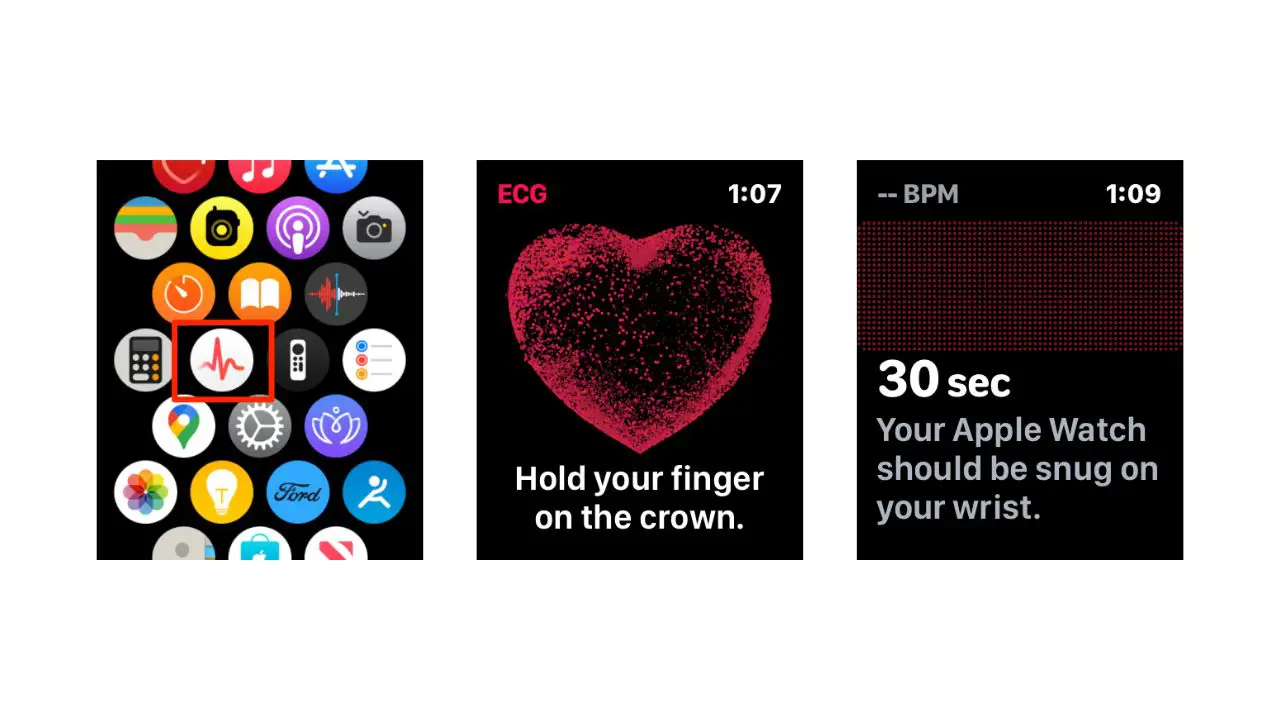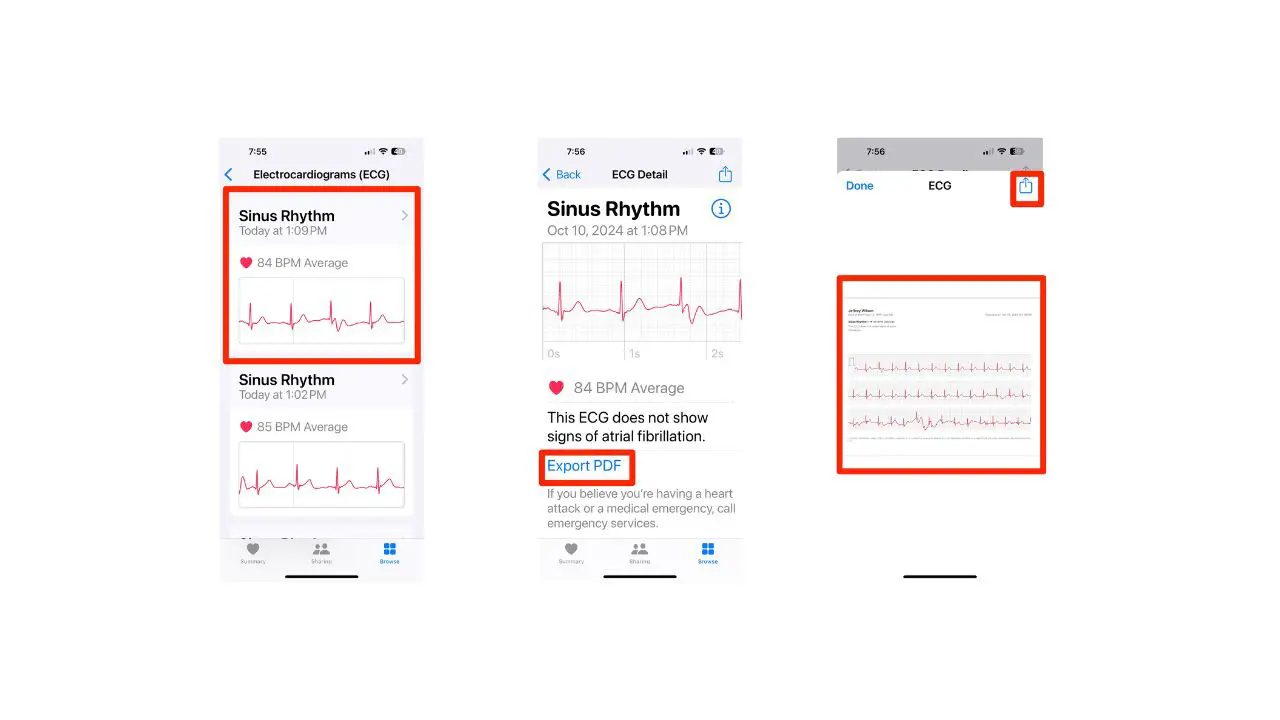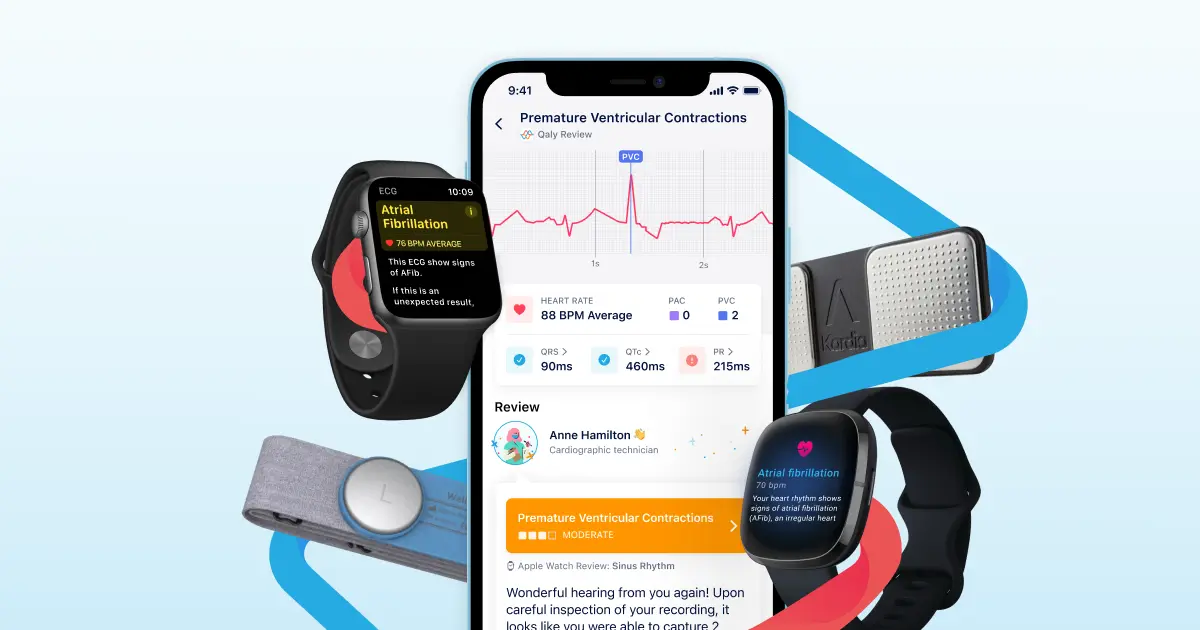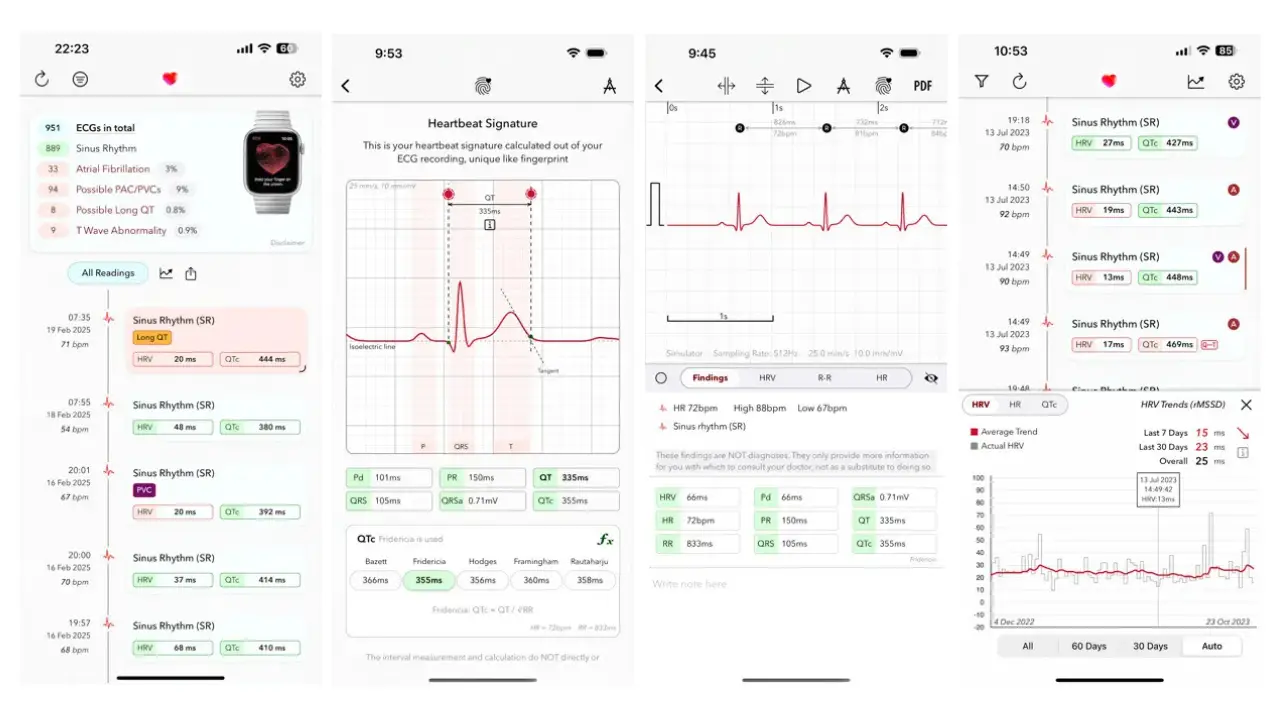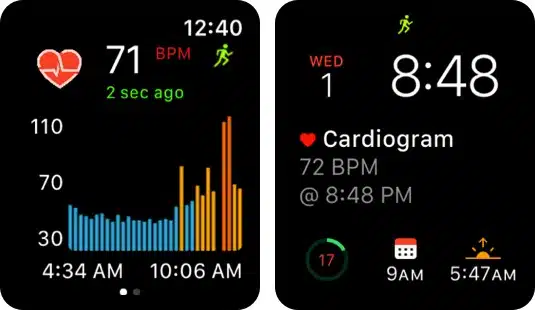The ECG app on Apple Watch helps you keep your heart’s health in check directly on your wrist, anywhere and at any time.
Apple Watch ECG uses the watch’s green LED light sensors and electrodes in Digital Crown and back of the watch to measure your heart’s electrical pattern and provide you with valuable insights into your heart’s rhythm, health, and blood flow.
Within just 30 second of taking an electrocardiogram, Apple Watch ECG (EKG) is able to alert you to irregularities and serious conditions such as AFib, low heart rate, and high heart rate.
And the ability to share your stats with a healthcare provider in the form of a PDF file ensures you get immediate medical help if you need one.
To be clear, the Apple Watch ECG app isn’t a medical tool. And as much it has FDA clearance, you must not use it as a substitute for professional medical guidance.
How to Use ECG App on Your Apple Watch
To get started with the ECG (EKG) app on your Apple Watch:
- Update your iPhone to iOS 18.
- Update your Apple Watch.
- Set up the ECG app.
- Take an ECG reading.
Update Your iPhone to iOS 18
First, update your iPhone to iOS 18 if you haven’t done so already, so you have the smartphone running the latest operating system.
- Open Settings on your iPhone and tap General.
- Select Software Update.
- Tap Download and Install if an iOS 18 update is available.
- Follow the on-screen instructions to complete the update process.
Update Your Apple Watch
Next, make sure your Apple Watch is running the latest watchOS 11. Do this especially if you haven’t done an Apple Watch update for a while.
- Open Watch app on your iPhone.
- Go to General.
- Select Software Update.
- Tap Install.
- Enter your passcode (if prompted) to proceed.
Set Up the Electrocardiogram in Health App
You’ll use the Health app on your iPhone to set up an electrocardiogram on your Apple Watch. To proceed:
- Open Health app on your iPhone.
- Tap Browse.
- Select Heart.
- Choose ECG and tap Set up.
- Follow the on-screen instructions to complete the process.
Take an ECG Reading
Unlike the EKG equipment in your doctor’s office, which analyzes 12 unique areas of your heart to determine its health, Apple’s electrocardiogram focuses only on irregular heartbeat (atrial fibrillation).
To take the ECG reading:
- Wear your Apple Watch and tighten the bands to a snug fit.
- Open the ECG app on the Watch.
- Rest your arm on your lap.
- Hold your finder lightly on the Digital Crown for 30 seconds.
- Remain as still as possible for this period because slight movements can alter the test.
- View your results on the watch face.
Understand Your Results
Your Apple Watch will base your ECG reading on four classifications: sinus rhythm, atrial fibrillation, low or high heart rate, and inconclusive.
Sinus Rhythm
You have a normal heart rhythm between 50 and 100 beats per minute (BPM). This means your heart is beating in a uniform pattern and therefore you have nothing to worry about.
Atrial Fibrillation (AFib)
ECG is seeing a pattern of an irregular heart rhythm between 50 and 120 beats per minute, potentially signifying a condition that needs medical attention. However, the reading may not necessarily be an indication of AFib, so it’s important that you follow up with your doctor first.
Low or High Heart Rate
Your heart rate is lower than 50 beats per minute or higher than 120 beats per minute. Note that a low or high heart rate isn’t necessarily a cause for alarm.
For example, it’s normal to record low heart rate when sleeping and a higher heart rate when engaging in a high intense physical activity.
However, do follow up with your doctor if you’re feeling unwell and have a higher or lower heart rate.
Inconclusive
Your Apple Watch wasn’t able to classify your heart’s rhythm.
You may not have created enough electrical signal for the reading, the back of your watch may be dirty, keeping the watch from taking measurements, or you moved your arms instead of staying still, thus affecting the measurement.
Take the reading again by following the steps above carefully.
View Your ECG History
To view your ECG history:
- Open Health app on your iPhone.
- Tap Browse.
- Select Heart.
- Tap Electrocardiograms (ECG).
- Select a specific record from your list of records to review that specific ECG history.
Export Your ECG to PDF for Your Doctor
To generate a PDF ECG report to share with your doctor:
- Choose an ECG record you would like to share.
- Scroll to the bottom.
- Tap Export PDF.
- Wait for a PDF file to generate.
- Tap the share icon and choose how you would like to share the PDF file.
Your share options include Email, AirDrop, Messages, and Save to Files. More importantly, ensure you follow the next prompts carefully to share your ECG’s PDF file with your healthcare provider.
How to Set Up AFib Notifications on Apple Watch
You don’t have to take an ECG reading every time to determine if you have an irregular heartbeat.
Simply set up heart rate notifications on your Apple Watch and the smartwatch will alert you if it detects a problem with your heart’s rhythm.
To do this:
- Open Watch app on your iPhone.
- Tap Heart.
- Select High Heart Rate under Set Up Irregular Rhythm Notifications.
- Choose the highest heart rate parameter.
- Go back to the previous screen.
- Select Low Heart Rate.
- Choose a lower heart rate parameter.
What’s the Best Alternative to Apple Watch ECG App?
Apple Watch’s built-in EGC app isn’t the only tool you can use to measure the strength and timing of the electrical signals that make up your heartbeat. Other Apple Watch heart rate apps you can use are Qaly ECG Reader, ECG+ Analyzer, and Cardiogram.
1. Qaly ECG Reader
Qaly lets you connect with certified cardiographic technicians who read and interpret ECG and heart rhythm for better healthcare.
A human expert in Qaly analyzes your PR internal, AFib, QT interval, PVC, and STV and then provides you with constructive feedback within 24 hours. Once you get your report, share it with your doctor or cardiologist for professional advice or treatment.
2. ECG+ Analyzer
ECG+ connects with Apple Health and uses the ECG data collected by the watch to calculate and analyze trends of your Heart Rate Variability, QT and PR.
If the HRV trend is on the rise, it means you have better fitness levels. And if the trend is on a downward spiral, you need to pay attention to your health.
QT monitors how long it takes your heart’s electrical system to recharge after every heartbeat. You get an alert if the app detects a prolonged QT interval, which means you may need to see your doctor.
The ECG+ Analyzer provides a comprehensive report every day. The report includes information about your heartbeat signatures, Heart Rate Variability Pointcare, and R-R Markings to give you a clear picture of how your heart works.
3. Cardiogram Heart IQ
Cardiogram Heart IQ gives you insights into your cardiovascular health based on the patterns of your heartbeat.
With Cardiogram Heart IQ, you get detailed heart rate data, a notification for low and high ECG readings, a comprehensive ECG and blood pressure report based on your health data, and helpful content created by heart health experts.
Cardiogram Heart IQ even allows you to link a family member or friend to your account, where they can view your data and provide assistance if needed.

